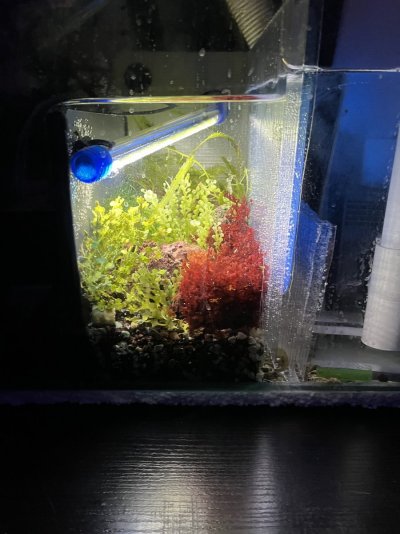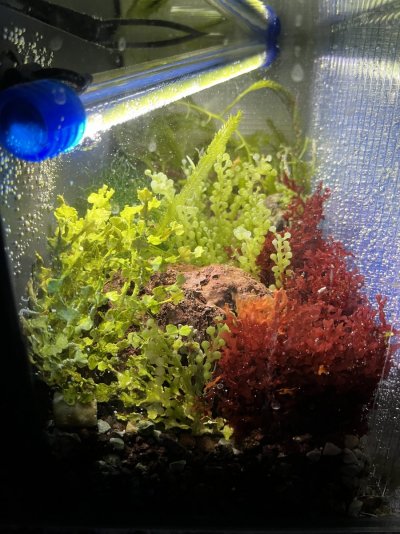Would going skimmerless on a macro algae setup be a good way to maintain nutrients in the water or does it really matter?
Navigation
Install the app
How to install the app on iOS
Follow along with the video below to see how to install our site as a web app on your home screen.
Note: This feature may not be available in some browsers.
More options
You are using an out of date browser. It may not display this or other websites correctly.
You should upgrade or use an alternative browser.
You should upgrade or use an alternative browser.
skimmers vs macro algae?
- Thread starter Greatreefer
- Start date
- Tagged users None
If the macro algae setup was big enough sure.
I run an oversize skimmer on my sps 120 and just setup a remote 30 gallon fuge.
My goal is to eliminate the use of gfo and go more natural.
I will always run a skimmer because I practice heavy in/out with 15 fish and feeding 8+ cubes a day.
I run an oversize skimmer on my sps 120 and just setup a remote 30 gallon fuge.
My goal is to eliminate the use of gfo and go more natural.
I will always run a skimmer because I practice heavy in/out with 15 fish and feeding 8+ cubes a day.
Last edited:
I don’t. Neither does @Tigahboy. Large quantities of macroalgae takes the role of skimmer and might even require supplemental nitrates and phosphates.Would going skimmerless on a macro algae setup be a good way to maintain nutrients in the water or does it really matter?
I'm going to start up a 33 gallon long mangrove/ macro algae display with pipe fish and possible dragonettes. I'm looking at attempting to grow phyto along with some pod cultures in a separate system. For filtration on the new setup I was planning on running a sock filter and no skimmer. Would the addition of the live food cause excessive nutrient issues or would doing water changes help balance this out?
I find skimmers are better but I choose to use algae as it’s natural and cheap. Plus it allows pods
@Greatreefer
According to Ken Feldermen research on carbon dosing in reef tanks, skimmers skew bacteria populations. With my focus on the microbial loop in reef tanks, I declined skimmers and focused on maximizing gas exchange with robust surface circulation and tumbling water from display to sump.
According to Ken Feldermen research on carbon dosing in reef tanks, skimmers skew bacteria populations. With my focus on the microbial loop in reef tanks, I declined skimmers and focused on maximizing gas exchange with robust surface circulation and tumbling water from display to sump.
@Greatreefer
According to Ken Feldermen research on carbon dosing in reef tanks, skimmers skew bacteria populations. With my focus on the microbial loop in reef tanks, I declined skimmers and focused on maximizing gas exchange with robust surface circulation and tumbling water from display to sump.
This is interesting, thanks for sharing. Any thoughts on if skimmers without carbon dosing also key bacterial populations? Or would you also be able to share the link?
Yes protein skimmers remove specific bactetia only.This is interesting, thanks for sharing. Any thoughts on if skimmers without carbon dosing also key bacterial populations? Or would you also be able to share the link?
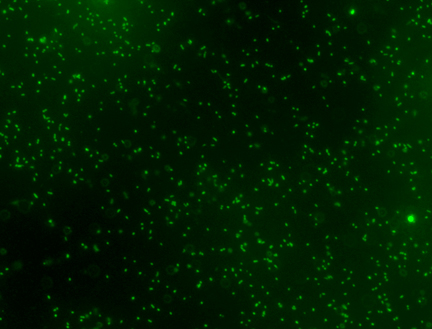
Bacterial Counts in Reef Aquarium Water: Baseline Values and Modulation by Carbon Dosing, Protein Skimming, and Granular Activated Carbon Filtration
What are the bacteria populations in the water column of reef tanks, and how does that value compare with bacterial counts in authentic reef water? Does carbon dosing indeed increase water column bacteria populations (i.e., is growth carbon limited)? Does mechanical filtration (protein skimming...
Our earlier research on the topic of carbon nutrient levels in marine aquaria (Feldman, 2008; Feldman, 2009; Feldman, 2010) has provided experimental documentation for four conclusions that impact on TOC management in our reef tanks:
- Reef aquaria utilizing active filtration (GAC, skimming) maintain equilibrium TOC levels within the range found on healthy tropical reefs.
- Protein skimming (i.e., bubbles) is not very effective at removing TOC from aquarium water, depleting typical reef tank water of only ~ 20 – 35% of the post-feeding TOC present.
- GAC filtration is quite effective at stripping reef tank water of its TOC load, removing 60 – 85% of the TOC present.
- And, quite intriguingly, the natural biological filtration, which starts with bacteria and other microbes, is remarkable in its capacity to remediate reef tank water of TOC, easily removing 50% or more of the post-feeding TOC increase in tank water.
Last edited:
In earlier articles on skewed bacteria populations due to protein skimmers, Feldman hypothesized that “old tank syndrome” could well be a natural outcome of protein skimmers.

 reefs.com
reefs.com
Aquaria subjected to active filtration via skimming present water column bacteria populations that are approximately 1/10 of those observed on natural reefs. The consequences of this disparity on the long-term health of the tank’s livestock are not known. How do reef tank organisms adapt to such a bacteria-deficient environment? Is the whole food web in an aquarium perturbed, or are there compensatory mechanisms that maintain an appropriate energy transduction through all of the trophic levels? Is “old tank syndrome” related to possible nutritional deficiencies stemming from this bacteria “gap”? Alternatively, could “old tank syndrome” be symptomatic of a gradual decrease of bacterial diversity as a consequence of selective skimmer-based removal of only bubble-susceptible bacteria? At present, it is not possible to go beyond speculation on these points – further research is needed.
On the other hand, our studies have shown that bacterial growth appears to be carbon limited in reef aquarium water. However, there is a demonstrable difference between reef tank water in an active reef tank, and reef tank water removed from the tank. In the latter case, bacteria consumers are largely absent, and so fueling bacteria growth via carbon addition translates to rapid and large increases in bacteria population. In an active reef tank, however, this population increase is not manifest, presumably because active predation keeps the overall level in check. Thus, the highly dynamic nature of bacteria populations in the water column of reef aquaria is highlighted by these studies. From a different perspective, the bacteria population in a reef tank seems to act as a buffer to help dissipate the otherwise potentially serious negative consequences of (inadvertent?) tank pollution via rapid carbon addition, at least perhaps up to a saturation point.
Finally, mechanical filtration in the form of skimming but not GAC does provide an effective means of bacteria export, at least up to a point. It appears likely that some types of bacteria are indeed “skimmable”, but others are not. Thus, skimming inadvertently provides severe (?) evolutionary pressure to skew the tank’s resident water column bacteria population to favor the “non-skimmable” cohort.
The bottom line with respect to the carbon dosing hypothesis is clear; the basic tenets of this theory appear to hold up to experimental scrutiny; carbon dosing does increase water column bacteria populations, and skimming does remove some bacteria with their attendant nutrient loads. Thus, the underlying science behind this approach to nutrient export appears valid.

Bacterial Counts in Reef Aquarium Water: Baseline Values and Modulation by Carbon Dosing, Protein Skimming, and Granular Activated Carbon Filtration
What are the bacteria populations in the water column of reef tanks, and how does that value compare with bacterial counts in authentic reef water? Does carbon dosing indeed increase water column bacteria populations (i.e., is growth carbon limited)? Does mechanical filtration (protein skimming...
4. Conclusions
The preliminary studies described herein document, for the first time, the modulation of water column bacteria population in reef tank water as a consequence of either (a) carbon source addition or (b) mechanical filtration (GAC, skimming). This information bears on the Carbon Dosing hypothesis for nutrient removal in marine aquaria.Aquaria subjected to active filtration via skimming present water column bacteria populations that are approximately 1/10 of those observed on natural reefs. The consequences of this disparity on the long-term health of the tank’s livestock are not known. How do reef tank organisms adapt to such a bacteria-deficient environment? Is the whole food web in an aquarium perturbed, or are there compensatory mechanisms that maintain an appropriate energy transduction through all of the trophic levels? Is “old tank syndrome” related to possible nutritional deficiencies stemming from this bacteria “gap”? Alternatively, could “old tank syndrome” be symptomatic of a gradual decrease of bacterial diversity as a consequence of selective skimmer-based removal of only bubble-susceptible bacteria? At present, it is not possible to go beyond speculation on these points – further research is needed.
On the other hand, our studies have shown that bacterial growth appears to be carbon limited in reef aquarium water. However, there is a demonstrable difference between reef tank water in an active reef tank, and reef tank water removed from the tank. In the latter case, bacteria consumers are largely absent, and so fueling bacteria growth via carbon addition translates to rapid and large increases in bacteria population. In an active reef tank, however, this population increase is not manifest, presumably because active predation keeps the overall level in check. Thus, the highly dynamic nature of bacteria populations in the water column of reef aquaria is highlighted by these studies. From a different perspective, the bacteria population in a reef tank seems to act as a buffer to help dissipate the otherwise potentially serious negative consequences of (inadvertent?) tank pollution via rapid carbon addition, at least perhaps up to a saturation point.
Finally, mechanical filtration in the form of skimming but not GAC does provide an effective means of bacteria export, at least up to a point. It appears likely that some types of bacteria are indeed “skimmable”, but others are not. Thus, skimming inadvertently provides severe (?) evolutionary pressure to skew the tank’s resident water column bacteria population to favor the “non-skimmable” cohort.
The bottom line with respect to the carbon dosing hypothesis is clear; the basic tenets of this theory appear to hold up to experimental scrutiny; carbon dosing does increase water column bacteria populations, and skimming does remove some bacteria with their attendant nutrient loads. Thus, the underlying science behind this approach to nutrient export appears valid.
MMMMMMMMmmmmmmmmm podsI find skimmers are better but I choose to use algae as it’s natural and cheap. Plus it allows pods

High protein
I'm going to start up a 33 gallon long mangrove/ macro algae display with pipe fish and possible dragonettes. I'm looking at attempting to grow phyto along with some pod cultures in a separate system. For filtration on the new setup I was planning on running a sock filter and no skimmer. Would the addition of the live food cause excessive nutrient issues or would doing water changes help balance this out?
I don’t use socks in my sump. I allow detritus to accumulate in the dark and fuel the “ microbial loop”. This is what @Paul B says about MULM:
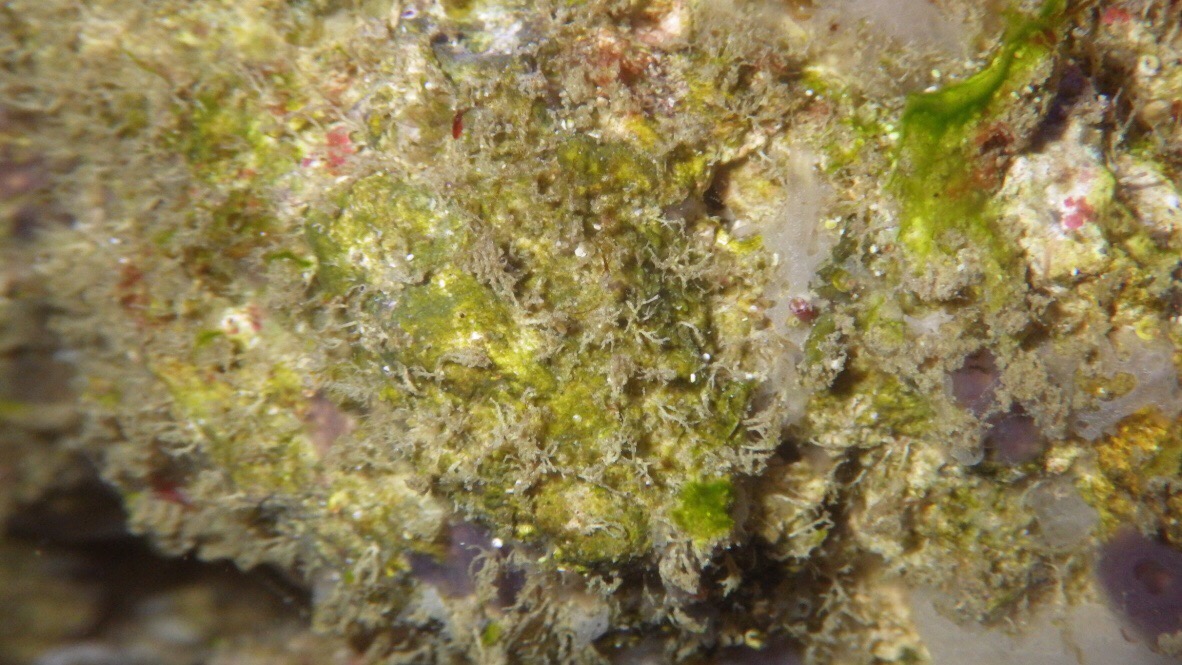
"Mulm" in a reef tank
I think one of the most important, and least understood or mentioned things in a reef tank is "mulm". That stuff that grows in the dark portions of a tank if it is set up long enough. "Mulm" is a combination of algae, sponges, bacteria, pods, worms, detritus, poop and any thing else that can be p...
 wamas.org
wamas.org
I think one of the most important, and least understood or mentioned things in a reef tank is "mulm". That stuff that grows in the dark portions of a tank if it is set up long enough. "Mulm" is a combination of algae, sponges, bacteria, pods, worms, detritus, poop and any thing else that can be propagated or grown in the dark. I realize most people would immediately get out the sponge, razor blade or grenade to remove it but there is a word I like to use to describe those people. That word is "wrong". Mulm is a natural product that you will find in the sea all over the world. Our tanks run on bacteria, algae and a food chain. Bacteria and a food chain are dependent on having a place to reproduce. Mulm is the perfect place. Rocks and glass are flat surfaces that are only two dimensional. Mulm makes these places three dimensional allowing much more space for bacteria and microscopic organisms to grow and do the macarana. (Then love to dance) Pods, which are needed for any small fish also need to eat and their numbers are directly related to how much food they can get their hands on (or whatever pods use to eat with) The more food, the more pods, the more pods, the easier to keep smaller fish. Larger fish such as copperbands and angels also eat pods.
Many people try to keep fish such as pipefish, mandarins or other dragonettes in a sterile tank and while feeding them a couple of times a day with tiger pods or some other expensive food. Those types of fish will not live for long in such a tank and they certainly won't spawn which I consider the "only" criteria to determine the state of health for any paired fish.
Mulm (after a while, maybe a few years) should grow on the back and sides of glass as well as under rocks.
Here in this picture of my clingfish, the mulm appears green. It is really brownish and that fish is on the side of my tank. I brightened up the picture and turned it sideways because it was in the dark and the fish was hard to see.
There is a thick layer of it on the back of my tank where my mandarins and pipefish like to hunt. My long spined urchin also grazes there most of the time as there is not much algae in my tank for him to eat. He is many years old as are the mandarins and pipefish and they are dependent on this food source.
A sterile tank IMO is the biggest problem we have keeping certain fish healthy.
Sterile is good in an operating room but very bad in a tank.
Ask away with the questions.This is really interesting stuff, thanks a lot for sharing. It really strikes some interesting topics; raises interesting questions…
“Would the addition of the live food cause excessive nutrient issues or would doing water changes help balance this out?”
@Adam1985
get specific. What live food? @Dana Riddle adds live phytoplankton to an active reef and as some phyto is consumed yet some continues to grow consuming nutrients.
Last edited:
Would going skimmerless on a macro algae setup be a good way to maintain nutrients in the water or does it really matter?
I have been skimmerless for > 40 yrs. In my present home I have four systems: 75G at 25yrs, 120G at 5yrs and two newest tanks at 6 months young, both are sumpless and skimmerless at 55G &/30G with much ornamental seaweed.
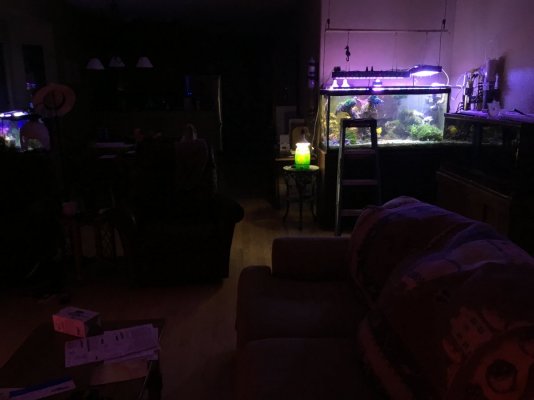
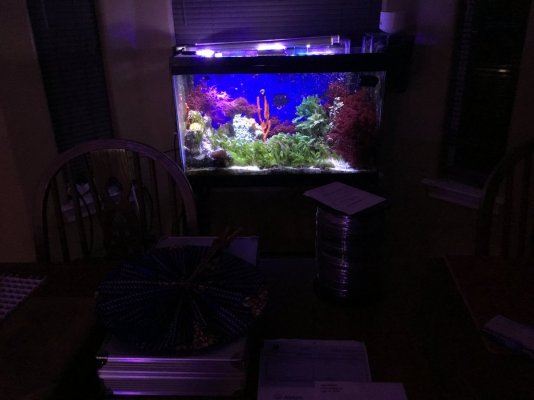
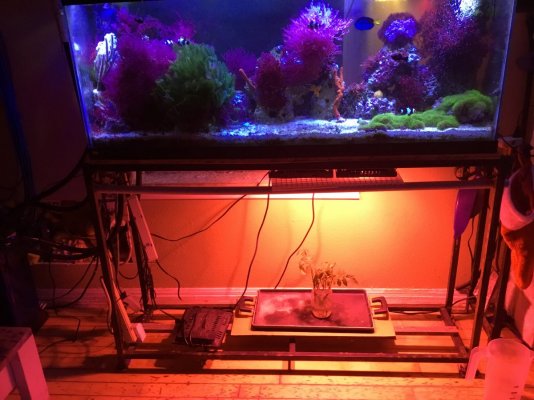
Subsea-
How long have you had your sponges?
How long have you had your sponges?
Hi I just added refugium chamber in my sump and as I really enjoy this look I was wondering if I can get rid of skimmer and turn whole sump into fuge . DT 270L sump around 50L . Some crushed lava stone rumble + sachem matrix as substrate for bacteria
Attachments
Subsea-
How long have you had your sponges?
It varies. I have some GOM diver collected rock that has emerging yellow ball sponges, after 6 months in tank I just now see them. With yellow ball, orange elephant ear and red tree sponges all from GOM, I average 2 yrs. That’s about the same length of time as I get with flame scallops. I feel they should last longer, but I don’t pamper them. I have kept sea apples the longest at 5 yrs. I do feel that sponges, particularly cryptic sponges are the missing ingredient for longevity in our captive ecosystems. Also consider bryozoans from Gulf Live Rock as part of natural filtration. They do last a long time in our tanks.
Gulf Live Rock.com
 gulfliverock.com
gulfliverock.com
Hi I just added refugium chamber in my sump and as I really enjoy this look I was wondering if I can get rid of skimmer and turn whole sump into fuge . DT 270L sump around 50L . Some crushed lava stone rumble + sachem matrix as substrate for bacteria
I choose not to use skimmers because they remove certain bacteria in the water column, which I recycle as food for sponges and other filter feeders. Gas exchange is critical in a reef tank and skimmers provide excellent gas exchange. I design skimmerless systems with robust circulation at the water surface. Also cascading waterfalls into sump, using baffles to exaggerate gas exchange. Even a wet dry section using any matrix or rubble where water from display goes into sump.
It may sound wierd , but can u draw it for me ? I may adapt your system if my DIY skills can handle itI choose not to use skimmers because they remove certain bacteria in the water column, which I recycle as food for sponges and other filter feeders. Gas exchange is critical in a reef tank and skimmers provide excellent gas exchange. I design skimmerless systems with robust circulation at the water surface. Also cascading waterfalls into sump, using baffles to exaggerate gas exchange. Even a wet dry section using any matrix or rubble where water from display goes into sump.
Similar threads
- Replies
- 3
- Views
- 195
- Replies
- 8
- Views
- 150
- Replies
- 12
- Views
- 380









